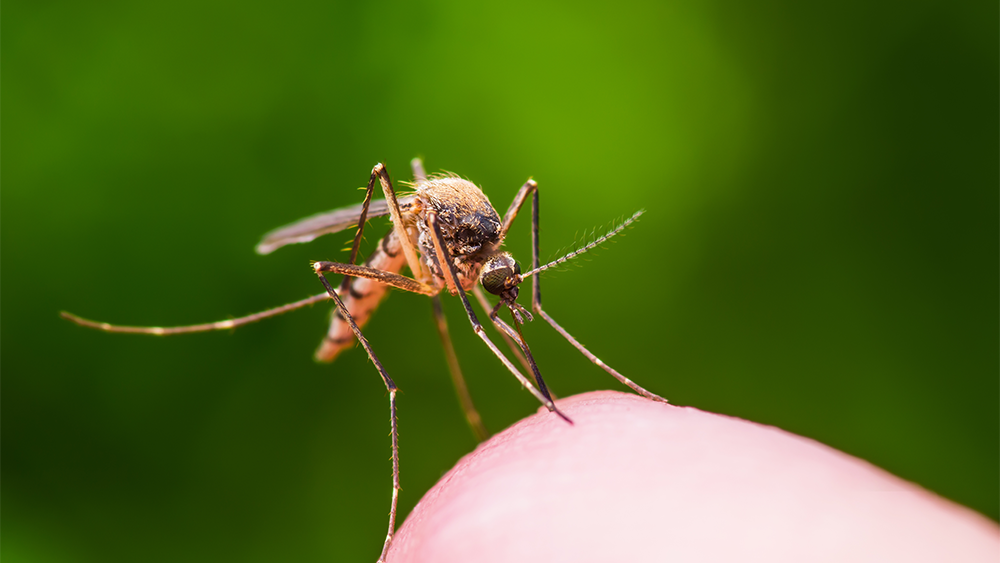
With an impressive capability of drinking up to three times their body weight in a single blood meal, mosquitoes are formidable parasites. But to reach adulthood, mosquitoes need to be raised in environments where the temperatures are conducive to their breeding, growth and development.
In a new study in the journal Scientific Reports, Texas A&M University researchers have developed a mathematical model based on machine learning to precisely predict the local or microclimatic temperature within the breeding grounds of the Aedes albopictus mosquitoes, carriers of the chikungunya and dengue viruses. Their algorithm also reveals that even in winter, the temperature may be warm enough in certain breeding grounds to allow mosquitoes to grow and thrive.
“Our goal is to develop accurate and automated mathematical models for estimating microclimatic temperature, which can greatly facilitate a quick assessment of mosquito populations and consequently, vector-borne disease transmission,” said Dr. Madhav Erraguntla, associate professor of practice in the Wm Michael Barnes ’64 Department of Industrial and Systems Engineering.
Responsible for around a million deaths globally, mosquitoes continue to wreak havoc to public health in many parts of the world. In addition to water, temperature plays a critical role at different stages in mosquitoes’ life cycle. Furthermore, The mosquitoes’ development, reproduction and survival can be mathematically modeled on the basis of temperature.
Past studies have largely relied on ambient temperature, or general air temperature, to make predictions about mosquito populations. However, these calculations have not been precise since ambient temperatures can deviate from those within mosquito breeding grounds. Recognizing this shortcoming, scientists rely on sensors, called data loggers, to continually keep track of the temperature, light intensity and humidity within breeding grounds. Despite their advantages, these sensors are inconvenient due to their cost and long-term use.
“People have realized that the microclimatic conditions are important, but right now data loggers are the only way to keep track of temperature,” said Erraguntla. “We wanted to address this gap by automating the process of estimating microclimatic temperatures so that we can model the life cycle of mosquitoes accurately.”
For their experiments, the researchers placed sensors in common mosquito breeding grounds around Houston, Texas, including storm drains, shaded areas and inside water meters. In addition, they obtained information on ambient temperatures from the National Oceanic and Atmospheric Administration repository. With this data as training input to a machine learning algorithm, the computer model could predict the microclimatic temperatures for a variety of ambient temperatures and breeding grounds within 1.5 degrees centigrade. Further, the model now could even forecast microclimatic temperatures for any ambient temperature, precluding the need for sensors.
Next, they fed the values of the microclimatic temperatures to another mathematical model, called the population dynamic model, that tracks the life cycle of the mosquitoes. Based on the microclimatic temperature and other parameters, the population dynamic model could estimate the populations at different stages in the lifecycle including eggs, larvae, pupae and adult Aedes albopictus mosquitoes.
The model also revealed that the insulated conditions of the storm drains could result in the survival of 84% of juveniles and eggs and 96% of adults during the winter months, a time of the year when mosquitoes are assumed to be dormant.
Although their climatic temperature prediction model has a high degree of accuracy, the researchers noted that additional research is needed to affirm if their model is applicable to places outside of Texas.
“Our work automates the prediction of microclimatic conditions, bypassing an otherwise expensive and time-consuming process of placing the sensors in different breeding spots, collecting the sensor data and analyzing it,” said Erraguntla. “From a public health context, this work will help epidemiologists better track mosquito-borne disease transmission and surges in mosquito abundances.”
Other contributors to this research include Darpit Dave, Josef Zapletal and Mark Lawley from the industrial and systems engineering department; and Kevin Myles, Zach Adelman and Tyler Pohlenz from the Department of Entomology at Texas A&M.